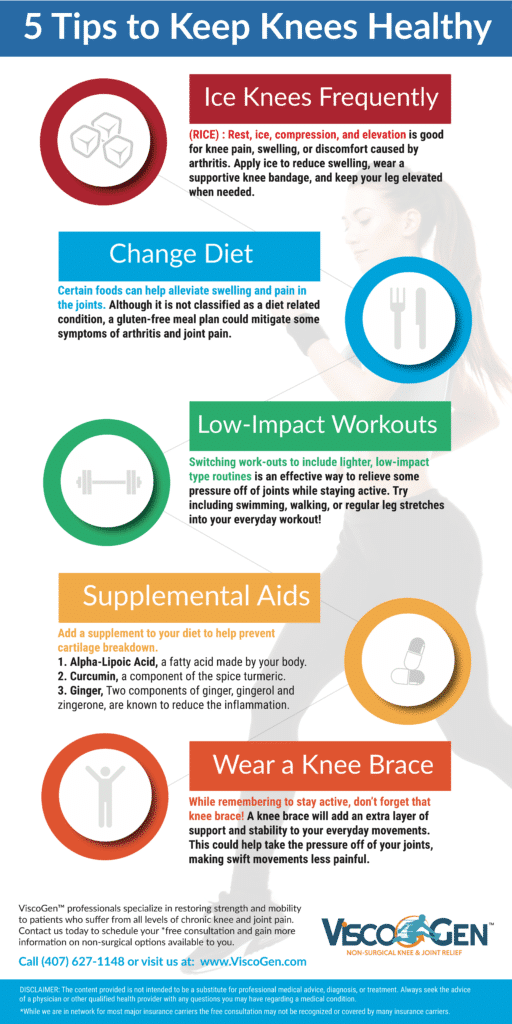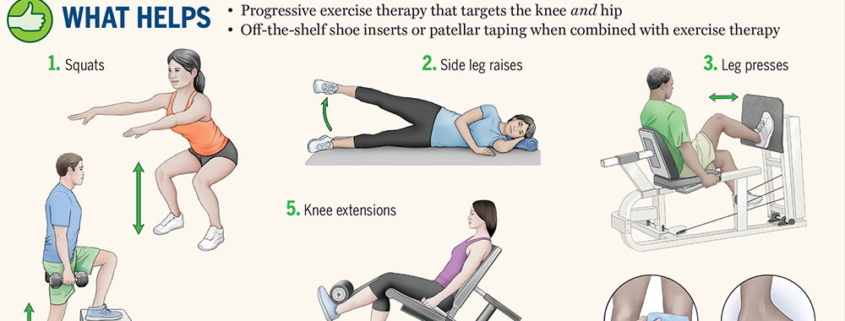Discover the simple yet effective strategies to ease knee pain in just 5 easy steps. Say goodbye to discomfort today!
Table of Contents
- Introduction: What’s Bugging Your Knees?
- Chapter 1: What is Knee Pain Anyway?
- Chapter 2: Becoming Knee Pain Detectives
- Chapter 3: Gentle Moves to Help Your Knees
- Chapter 4: The Power of Pause – Taking A Break
- Chapter 5: Ice & Warm Hugs for Your Knees
- Chapter 6: Eating Right to Fight Knee Pain
- Chapter 7: The Doctor Visit – Getting Expert Help
- Knee Protectors – Gear Up!
- Frequently Asked Questions (FAQs)
Introduction: What’s Bugging Your Knees?
If you’ve ever felt a little ache or discomfort in your knees, you’re not alone. Our knees do a lot of work each day, helping us run, jump, and play. But sometimes, they can feel a bit unhappy, and that’s okay! In this article, we’re going to learn all about knee pain and how to make sure our knees stay healthy and strong. So, let’s dive in and find out what’s bugging our knees!
Have you ever wondered why your knees hurt sometimes? Or how you can keep them feeling their best? Well, stick around because we’re going to explore some exciting ways to take care of your knees and keep them happy. Let’s get started on this journey to discover how to ease knee pain and boost our joint health!
Chapter 1: What is Knee Pain Anyway?
Our knees are like the hinges on a door, helping us bend and move around. They are super important because they support our body weight and help us walk, run, jump, and play. Without knees, we would wobble like a tower made of jelly! Inside our knees, there are bones, ligaments, and cartilage working together to keep everything smooth and steady.
When Knees Say Ouch!
Ever had that sharp pang when you try to stand up after sitting for a while or felt a dull ache while playing your favorite game? That’s knee pain! Sometimes it feels like a pinch, a sting, or a throbbing sensation that makes it hard to do the things you love. Maybe you twisted it the wrong way while running or just used it too much without giving it a break. Our knees speak to us in their special language of ouch, telling us to give them some TLC.
Chapter 2: Becoming Knee Pain Detectives
When your knees are trying to tell you something, they can use various ways to get your attention. One clue might be a sharp pain when you move a certain way or maybe your knee feels stiff and hard to bend. Swelling or redness around your knee can also be a sign that something isn’t quite right. If you notice any of these hints, it’s important to pay attention and let someone know, so you can figure out how to help your knees feel better.

Image courtesy of via Google Images
Finding Clues: Why Do Knees Hurt?
Knees might start hurting for different reasons. Sometimes it’s because you played too hard and didn’t take a break when your body needed it. Other times, knees hurt because of a tumble or a fall that put extra strain on them. Just like a detective looks for clues to solve a mystery, you can try to think back to what happened before your knees started hurting. By connecting the dots between what you did and how your knees feel, you can become a super-sleuth in figuring out the cause of your knee pain.
Chapter 3: Gentle Moves to Help Your Knees
When your knees are feeling a bit cranky, there are some gentle moves you can do to help them feel better. These exercises are easy to do and safe for kids like you who want to keep their knees in tip-top shape. Let’s give them a try!
1. **Knee Lifts**: While standing tall, lift your knee as high as you can towards your chest, then lower it back down. Repeat this movement on both legs for a set of 10 times.
2. **Calf Raises**: Stand on your tiptoes for a few seconds, then slowly lower back down. Do this 10 times to strengthen your calf muscles and support your knees.
3. **Seated Leg Extensions**: Sit on a chair with your feet flat on the floor. Lift one leg straight out in front of you and hold for a few seconds before lowering it back down. Switch legs and repeat.
These exercises can help improve the flexibility and strength of your leg muscles, which might ease some of the discomfort in your knees. But remember, take it slow and listen to your body. If anything hurts, stop and talk to a grown-up.
Do’s and Don’ts When Exercising
While it’s important to keep those knees moving, it’s equally crucial to do it safely. Here are some do’s and don’ts to keep in mind when you’re exercising to protect your precious knees:
**Do**: Warm Up – Before starting your exercises, warm up by walking or jogging lightly to get your muscles ready.
**Don’t**: Overdo It – Pushing yourself too hard can strain your knees and lead to more pain. Be gentle with your body.
**Do**: Use Proper Form – Make sure you’re doing the exercises correctly to avoid putting extra stress on your knees.
**Don’t**: Ignore Pain – If you feel any sharp pain or discomfort, stop what you’re doing and take a break. It’s okay to rest.
By following these simple guidelines, you can make sure your knee-friendly exercises are helping, not hurting, your knees. Keep up the good work, little knee champion!
Chapter 4: The Power of Pause – Taking A Break
Hey there, young readers! Sometimes, our knees can feel sore or achy, and that’s when it’s essential to listen to our bodies and take a break. If your knees are hurting after running around or playing sports, it’s a sign that they need a rest. It’s like when you’re tired after a long day of playing – your body needs time to recharge, and so do your knees!
Image courtesy of via Google Images
Rest Is Not Laziness
Rest is not about being lazy; it’s about giving your knees the chance to heal and get stronger. Just like how sleeping helps us feel more energetic and ready to play the next day, giving your knees a break can make them feel better too. So, remember, taking a pause and resting is an active way of helping your knees feel good again.
Chapter 5: Ice & Warm Hugs for Your Knees
When your knees are feeling sore and achy, like they’ve been working extra hard, giving them a cooling treatment with ice can work wonders. Ice helps to reduce swelling and numbs the pain, giving your knees the relief they crave.
All you need to do is grab an ice pack (or a bag of frozen peas if you don’t have one) and wrap it in a cloth or towel. Place it gently on your knee for about 15-20 minutes. Make sure not to apply the ice directly to your skin as it can cause damage. Let the ice work its magic and repeat this every few hours if needed.
Warmth Can Heal
On the flip side, warmth can also be a soothing agent for your knees. Heat helps to increase blood flow to the area, relaxing tight muscles and joints. If your knee pain feels more stiff than achy, applying heat might be exactly what you need.
You can use a warm towel, a heating pad, or even take a warm bath to give your knees some warmth therapy. Just like with ice, be cautious not to make the heat too intense to avoid burns. About 15-20 minutes of gentle warmth should be sufficient to help ease your knee discomfort.
Chapter 6: Eating Right to Fight Knee Pain
Eating the right foods plays a crucial role in keeping your knees healthy and strong. Just like superheroes need their special foods to stay strong, your knees also need their superfoods!

Image courtesy of via Google Images
Superfoods for Super Knees
Guess what? Some foods have special powers that can help your knees feel better. Foods like broccoli, spinach, and sweet potatoes are packed with vitamins and minerals that are like magic for your knees. They can help reduce inflammation and keep your joints happy. So, don’t forget to include these superhero foods in your meals!
Foods to Skip
While some foods can be like superheroes for your knees, others can be like sneaky villains that make your knee pain worse. Foods high in sugar and unhealthy fats might not be the best choice for your knees. They can cause inflammation and make your knees ache more. So, try to limit foods like sugary drinks, fast food, and sweets to help your knees feel their best.
Chapter 7: The Doctor Visit – Getting Expert Help
When your knees are feeling more than just a little ouchie, it might be time to let the grown-ups in on it. Talking to your parents about your knee pain is super important so they can help you get the right treatment. Remember, they care about you and want to make sure you feel better soon.
Meeting the Knee Helper
Visiting the doctor might sound a bit scary, but don’t worry, they are there to help you feel better. When you visit the doctor for your knee pain, they will ask you questions about how your knees feel and may even want to take a closer look. Sometimes they might recommend exercises, physical therapy, or other treatments to help your knees heal and become stronger.
Knee Protectors – Gear Up!
In this chapter, we will explore the use of protective gear and supports to keep our knees safe and sound. Let’s gear up and dive into the world of knee protectors!
| Step | Description |
|---|---|
| 1 | Rest and ice the affected knee |
| 2 | Use compression bandages to reduce swelling |
| 3 | Elevate the knee to relieve pressure |
| 4 | Perform gentle exercises to strengthen the knee |
| 5 | Consider physical therapy or seeing a healthcare professional |

Image courtesy of via Google Images
Suit Up your Knees
There are different types of knee protectors available to keep your knees protected during activities like sports or play. Knee braces, sleeves, and pads are some common options that can help prevent injuries and provide support to your knees. These protective gears come in various shapes and sizes, designed to cater to different needs and activities.
Making Sure it Fits
When choosing knee protectors, it is essential to ensure that they fit you well. A properly fitting knee brace or sleeve can provide the right amount of support and protection, helping to prevent injuries and alleviate pain. Make sure to measure your knee properly before selecting a protector and follow any sizing guidelines provided by the manufacturer. A good fit will ensure that the knee protector stays in place and does its job effectively.
Knee High to a Grasshopper!
Well, young grasshoppers, you’ve now learned so much about keeping your knees happy and healthy! Remember, taking care of your knees is super important to ensure you can run, jump, and play without any aches or pains. Let’s recap the key points we’ve covered in this journey together.
Listen to Your Knees
Always pay attention to what your knees are telling you. If they start to hurt, be sure to take a break and rest. Your body knows best!
Move Those Knees
Regular exercise and knee-friendly movements can help keep your knees strong and flexible. Try out the exercises we’ve talked about to give your knees the love they deserve.
Chill Out and Warm Up
If your knees are feeling sore, remember that ice and heat can be your best buddies. Ice can reduce pain and swelling, while warmth can soothe achy joints.
Eat Well for Strong Knees
Stay away from sugary snacks and aim for superfoods that will support your knee health. Good nutrition goes a long way in keeping your knees feeling tip-top!
Reach Out for Help
If your knee pain doesn’t go away or gets worse, don’t be afraid to talk to a grown-up about it. Visiting a knee helper, like a doctor, can make a big difference in getting you back on your feet and moving pain-free.
Remember, taking care of your knees is all about keeping you happy, active, and ready for any adventure that comes your way! So, stretch, strengthen, and take those steps towards healthy, happy knees. Until next time, keep on hopping, young grasshoppers!
Frequently Asked Questions (FAQs)
Why do my knees hurt after I run?
Running can put a lot of stress on your knees because it is a high-impact activity. When you run, your knees absorb the shock from each step you take. If you run too much or don’t have the right shoes, it can cause pain in your knees. This is why it’s important to stretch before running and wear proper shoes to support your knees.
Are there any fun exercises I can do for my knees?
Yes, there are many fun exercises you can do to help strengthen your knees and keep them healthy. Activities like swimming, biking, and dancing are great for your knees because they are low-impact and help build strong muscles around your knee joint. Remember to always warm up before exercising and cool down afterward to protect your knees.
What should I tell my teacher if my knee hurts during gym class?
If your knee hurts during gym class, it’s important to tell your teacher right away. Let them know that you are experiencing pain and that you may need to stop the activity to avoid further injury. Your teacher can help you modify the exercise or provide a different activity that won’t hurt your knees.
Can certain foods make my knees feel better?
Yes, certain foods can help reduce inflammation and strengthen your joints, which can make your knees feel better. Foods like salmon, nuts, and leafy greens are rich in nutrients that support joint health. On the other hand, sugary snacks and processed foods can increase inflammation and make knee pain worse, so it’s important to choose healthy foods for happy knees.
How does the doctor check my knees?
When you visit the doctor for knee pain, they will ask you questions about your symptoms and examine your knees. They may check for swelling, tenderness, or range of motion in your knee joint. In some cases, the doctor may recommend X-rays or other imaging tests to get a closer look at your knees and determine the best treatment for your pain.
What should I do before wearing a knee brace?
Before wearing a knee brace, it’s important to make sure it fits properly. Measure your knee to choose the right size brace and adjust the straps to ensure a snug but not too tight fit. Make sure the brace is positioned correctly on your knee to provide the support you need. Always follow the instructions that come with the brace to wear it safely and effectively.





